May 23, 2025 | 00:43 GMT +7
May 23, 2025 | 00:43 GMT +7
Hotline: 0913.378.918
May 23, 2025 | 00:43 GMT +7
Hotline: 0913.378.918
Born in 1975, Nguyen Van Ky is one of the few artisans in the Xuân Lai bamboo furniture-making village (Xuan Lai Commune, Gia Binh District, Bac Ninh Province) who was awarded the title of “Master Craftsman in Bamboo Smoke Treatment” by the Bac Ninh Provincial People's Committee while still relatively young: in 2014, when he was just about 40.
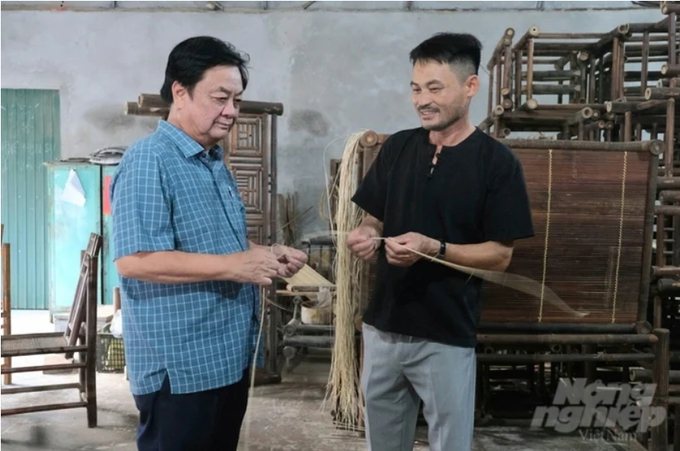
Artisan Nguyen Van Ky of Xuan Lai Bamboo Village introduced the village and its craftsmanship to Minister Le Minh Hoan.
In 1996, after leaving the military, Ky returned to his hometown. Xuan Lai is an entirely agricultural commune with a bamboo craft tradition that has been passed down through generations for over 200 years. Upon returning, Ky wanted to continue the traditional craft, not only to make a living but also to improve on what the village was doing and to see his bamboo furniture products exported. Previously, Xuan Lai's bamboo products were mainly sold domestically and were often perceived as ordinary, not durable, and suitable only for rural settings like bamboo chairs, beds, etc., and not for more luxurious spaces.
Persistent and creatively experimenting, Ky adapted to working with bamboo and sought new directions with other types of plants such as hop da, luong, truc, and tam vong, to enhance the design, material, and quality of his products.
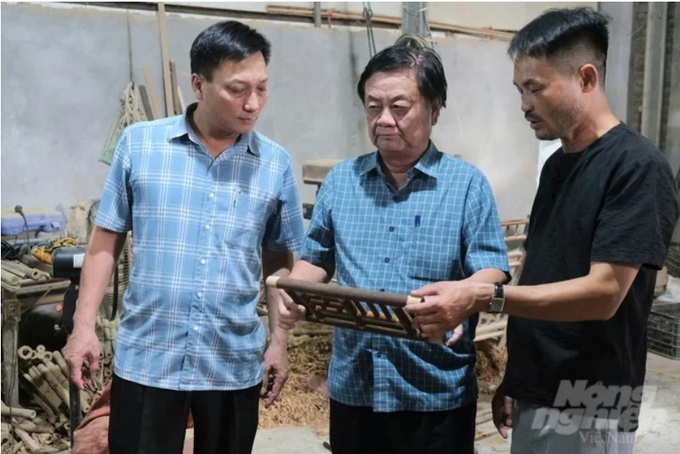
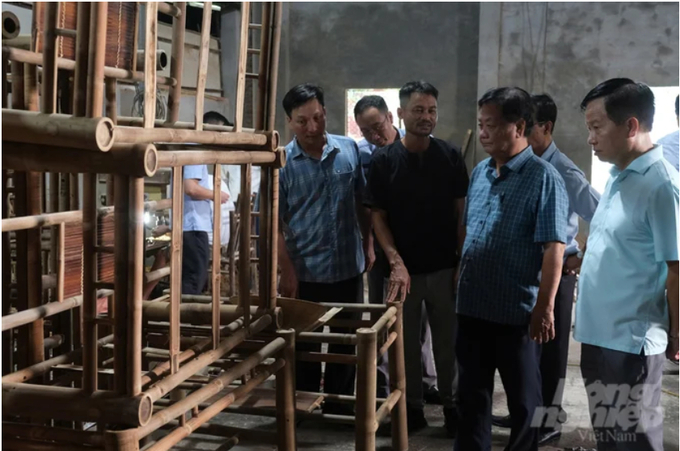
Minister Le Minh Hoan visited Xuan Lai Bamboo Village in Gia Binh District, Bac Ninh Province.
Creating a bamboo product involves many steps: initial processing, soaking fresh bamboo in ponds or water tanks for 4 to 5 months to make the bamboo flexible, durable, and resistant to warping and pests. After soaking, the bamboo is removed, peeled, dried, and treated to eliminate any strong odors from the bamboo. The bamboo is then sorted, cut into pieces, and assembled into products like bamboo beds, tables, and chairs.
With all these steps and time, transforming a bamboo pole from the forest into a finished product takes several months!
In the early 2010s, Ky received his first international order: two containers of bamboo and rattan furniture shipped to the United States, sold to the Vietnamese expatriate community. Vietnamese expatriates in the U.S. opened restaurants and many families wanted familiar products that reminded them of their childhood and homeland, items that carried their cultural heritage and eased their homesickness.
Ky's products began to gain recognition in the international market. Following this were orders from Australia, Canada, France, and more. Vietnamese bamboo, through the craftsmanship of Xuan Lai's artisans, was exported in the form of furniture made from bamboo, rattan, hop da, luong, and other plants native to Vietnam's mountainous regions.
But the journey did not stop there!
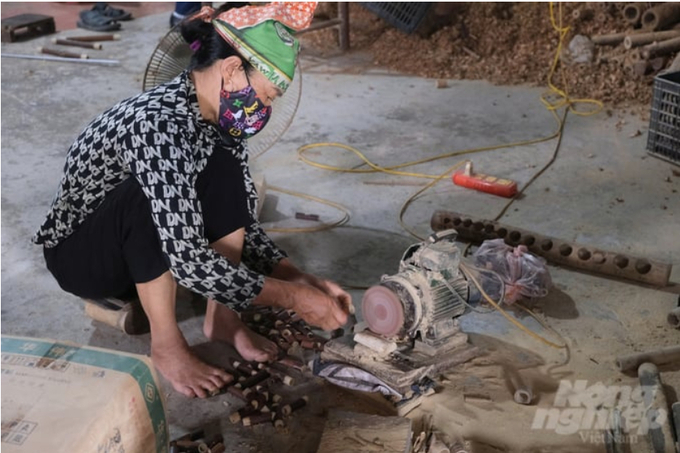
The process of cutting details from bamboo and rattan to assemble into bamboo and rattan furniture products.
Traditional products are often painted and polished, which can obscure the natural, familiar appearance of bamboo. Nguyen Van Ky invented a new technique that he claims is unique worldwide and unmatched by any other bamboo craft village in Vietnam, except Xuan Lai. This technique involves smoking the exterior of the bamboo, and uniquely, smoking the entire bamboo pole.
In rural areas, particularly among older generations, items like smoking pipes and bamboo water pipes are known for their intricate patterns and grain marks created by smoke. These patterns are achieved through smoking, not by burning iron rods and carving them into the surface.
With keen insight, artisan Nguyen Van Ky developed a new step: smoking entire bamboo and rattan poles several meters long, allowing the smoke to penetrate the entire pole. This technique is known as "smoking the entire pole."
"We use straw, hay, and leaves to create the smoke. The key is not to let it turn into a flame, as bamboo and rattan are highly flammable. Once the smoke is produced, the entire bamboo is smoked to create a new layer or 'skin' on the bamboo. This technique not only extends the product's lifespan by protecting it from termites and insects but also gives it a more beautiful, antique appearance," Ky explained.
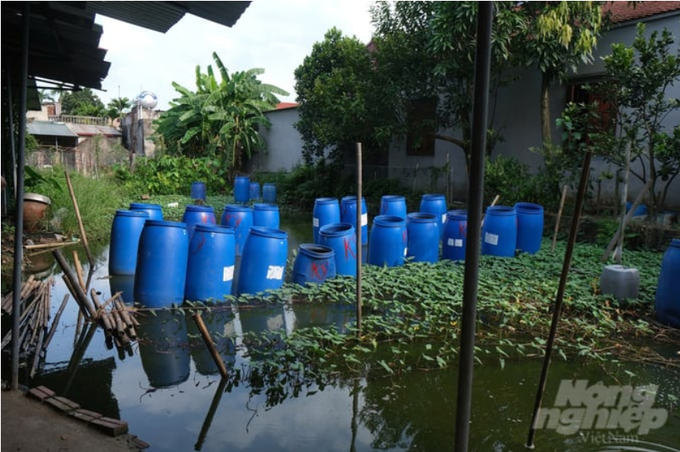
The area where bamboo is soaked before processing.

A step in peeling the outer layer of raw bamboo.
Recently, Nguyen Van Ky's workshop received a new order from Japan, providing more opportunities for Vietnamese bamboo to be exported to additional countries and helping the craft village to thrive.
In 2007, during a visit to Gia Binh town a few kilometers from Xuan Lai, Mr. Ky came across a bamboo bed left outside, with 4 or 5 construction workers sitting on it during their lunch break, sipping tea and smoking.
Born into a bamboo craft village and living by bamboo, Mr. Ky quickly stopped to admire the bed made from this unique material. The owner was an 86-year-old man, and during this time, his family was building a new house, so they had to move all their belongings outside. Consequently, the bamboo bed was left outdoors, serving as a resting place for the workers.

The hundred-year-old bamboo bed – a precious artifact that artisan Nguyen Van Ky is preserving in the three-room tiled house of his family.

The bamboo house with earthen walls that Ky has reconstructed within the premises.
According to the old man, the bed had been in his family since his grandfather's time, making it nearly a hundred years old. Astonished by the fact that such a slender, simple bed could remain so resilient and durable after so many years, Mr. Ky asked if he could keep the bamboo bed. However, the old man firmly refused, wanting to keep it as a memento.
The trip from Xuan Lai to Gia Binh town took only 15 minutes. Mr. Ky visited the bed regularly, and as he became more familiar with the old man and his craft of making bamboo household items, the old man eventually gifted him the old bed for display.
“To others, it might just be an old bed, but to me, it is a treasure. In the past, people didn’t have the money to buy wooden beds or cabinets, so almost all everyday items in rural homes were made from bamboo: bamboo beds, bamboo benches, bamboo screens, plate racks, baskets, and tools. But I had never seen a bamboo bed like this before. If it is indeed as old as the owner claimed, then it is truly a miracle that people a hundred years ago had the idea to make a bed out of bamboo,” Mr. Ky passionately recounts.
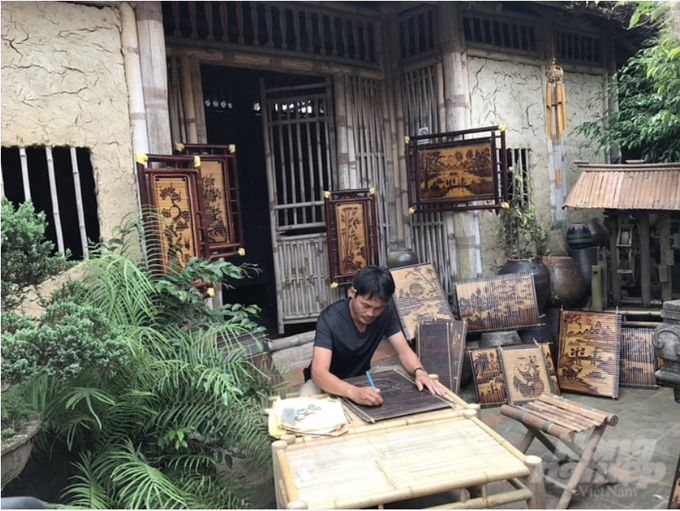
Nguyen Van Ky, a master craftsman from the Xuan Lai bamboo village, is crafting bamboo artwork.
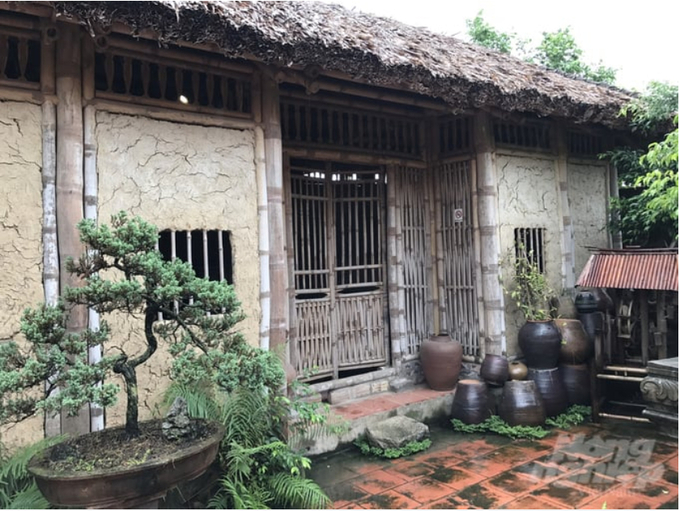
The bamboo-and-mud house is a familiar image from the rural villages of Northern Vietnam in the 1990s.
Bringing the precious bed back to Xuan Lai, Mr. Ky invited craftsmen to clear the trees on his garden plot, reserving space to build a traditional three-room house with tile roofing, and ceremoniously placed the bamboo bed inside as a “museum” to preserve the artifact. To this day, the hundred-year-old bamboo bed remains intact, adorned with a mat selected from a famous reed mat weaving village.
Also in 2007, he constructed a three-room house with bamboo walls and earth plaster, situated opposite the tiled house, creating a nostalgic space reminiscent of the 1990s. The house’s walls are entirely made of bamboo frames, with mud mixed with straw applied to the outside and smoothed meticulously. After nearly 20 years, the mud and bamboo house remains intact, showing no signs of deterioration.
“At that time, I was rushed and couldn’t fully achieve my goal. According to the old practices, if you have time, you should obtain some cow dung and buffalo dung, dry it, grind it, and mix it with mud as an additive. The dung mixed with mud makes it finer, and curiously, termites are deterred. By rebuilding the earthen house, I wanted to preserve the old images while also affirming that bamboo and rattan—familiar materials that have been part of Vietnamese daily life for a long time—are gradually making a comeback,” craftsman Nguyen Van Ky shared.
On August 9, Minister of Agriculture and Rural Development Le Minh Hoan visited Xuan Lai Bamboo Village and the production facility of artisan Nguyen Van Ky. During the visit, Nguyen Van Ky showcased the various stages and processes involved in bamboo craftsmanship, as well as the furniture products made from bamboo and rattan.
“This is the first time I have had the honor of welcoming the Minister to visit our family’s production facility. I am deeply touched, honored, and proud. I promise the Minister that we will continue to preserve and develop our craft, promote the image of Vietnamese bamboo abroad, not only to create jobs and income for workers but also to preserve our cultural heritage and showcase the skillful hands of our local artisans,” said artisan Nguyen Van Ky.
Translated by Mai Quang Huy
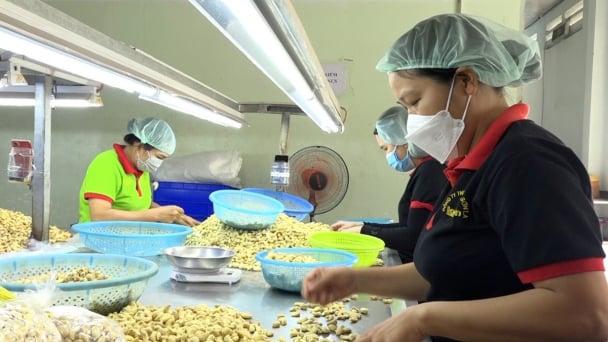
(VAN) Market expansion is a matter of survival for Vietnamese businesses amid fierce competition and global supply chain fluctuations.
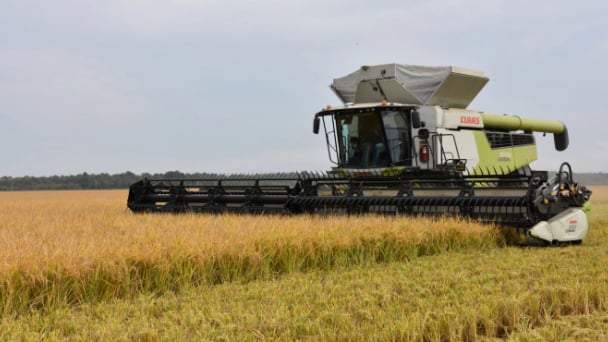
(VAN) Global market prospects for U.S. long-grain rice for the upcoming marketing year.
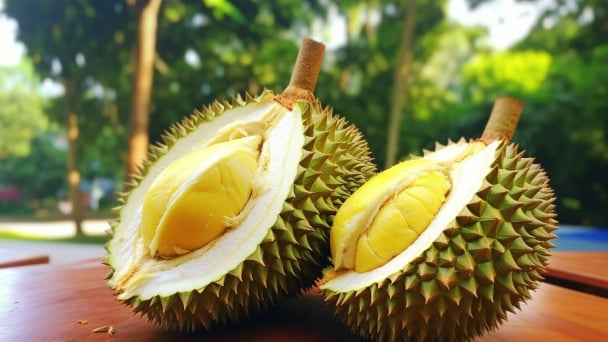
(VAN) China’s General Administration of Customs started permitting fresh durian shipments from Cambodia after a phytosanitary protocol was signed with the Cambodian Ministry of Agriculture in late April.
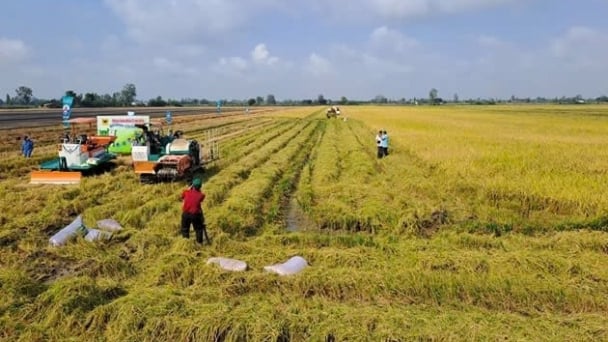
(VAN) To operate carbon market, one of the key issues is determining which types of 'commodities' meet the standards to be traded on the market.
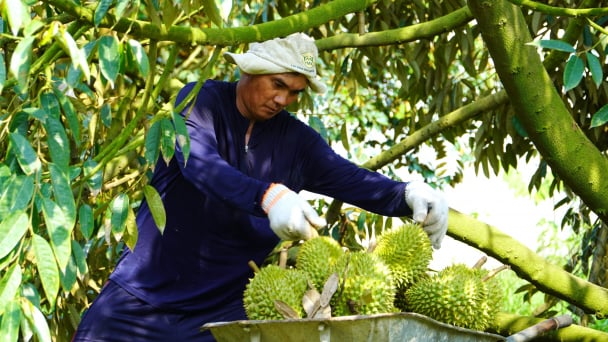
(VAN) Durian-producing localities need to coordinate more effectively with central authorities to improve the traceability, monitoring, and response systems in case of violations.
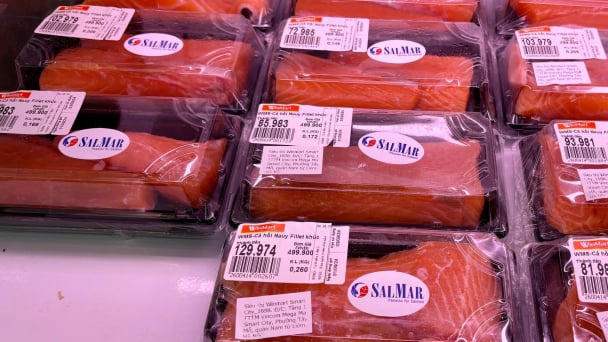
By minimizing waste, embracing modern technology, and expanding into niche markets, SalMar - the second largest producer of Atlantic salmon in the world has built a successful strategy to conquer the global market.
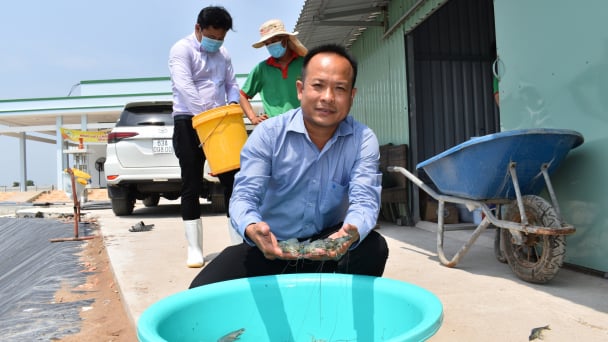
(VAN) One of the key factors for businesses to effectively take advantage of tariff preferences under these FTAs is the rules of origin.